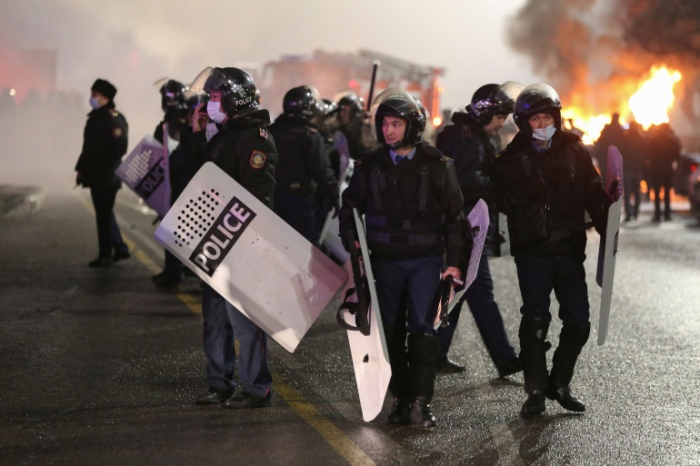"Today, the city was once again under attacks by extremists and radicals. The necessary measures are being taken to protect the lives and safety of citizens. We urge those who took to the streets to disperse. Our main goal is to prevent further escalation of violence and radicalism," Tengrinews.kz quoted Timemerdenov.
Timemerdenov said that 120 vehicles were burned during protests, including 33 ambulances and firefighters, 120 shops and trade facilities, 180 catering establishments, and around 100 offices were damaged.
On January 2, crowds took to the streets in the cities of Zhanaozen and Aktau in the Mangystau Region, in southwestern Kazakhstan, protesting against high fuel prices. Two days later, the protests engulfed Almaty, in the country’s southeast, where the police used flashbangs to disperse the crowd, as well as other cities, including Atyrau, Aktobe (in the west), Uralsk (in the northwest), Taraz, Shymkent, Kyzylorda (in the south), Karaganda (in the northeast) and even Kazakhstan’s capital Nur-Sultan. The president imposed a two-week state of emergency in the Mangystau Region and in the Almaty Region, as well as the republic’s largest city of Almaty and the capital Nur-Sultan. On January 5, the head of the state also accepted the government’s resignation. Its members will continue to perform their tasks until a new cabinet is formed.
More about: Kazakhstan















































